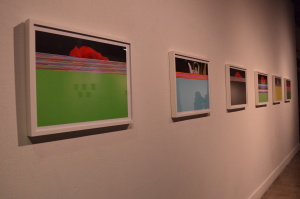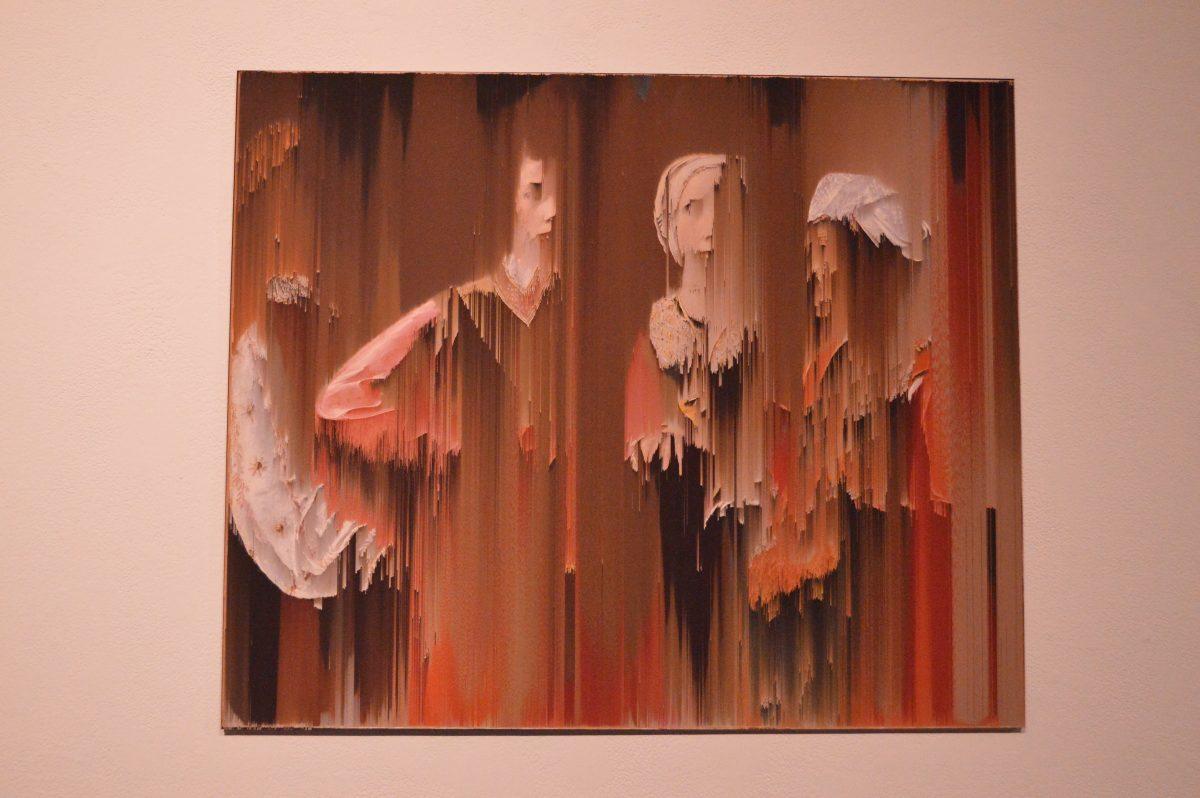UTD’s newest art show explores glitch, a modern art form that creates patterns and designs through errors in the algorithmic flow of digital instruments.
Glitch art, the aesthetic arrangement of bugs in the coding of a digital file, has gained popularity since software manipulation became possible. Glitch by meaning is a defect, but this art style has given a new character to error and encouraged people to embrace imperfection.
A gallery in the Visual Arts Building named “Message (Not) Received” features the work of renowned, international glitch artists and UTD professors.
Among them is Sabado Visconti, a Brazilian-born artist who is a documentary and film producer. Inspired by artists such as Edward Hopper and Sally Mann, his work in “Message (Not) Received” consists of digitally manipulated media files. The files Visconti altered were screenshots from Alfred Hitchcock’s film “Vertigo,” and he aptly named his collection “Vertigo by Alfred Glitchcock.”
“When I made these glitches, I was very much into the concept of corrupted memories,” Visconti said. “‘Vertigo’ directly touches upon this theme of human memory’s inability to recreate experience.”
Glitch artist Raluca Sturzu has work at the show under the name, “Pixels on Old Master.” Sturzu, originally from Bucharest, Romania, shared printed versions of her work for the first time at the show, and her hometown informed her work heavily.
“Bucharest is an aesthetically challenging city, full of contrasts and, at times, quite difficult to be dealt with,” Sturzu said. “The culture and the people here are to some extent the result of this fragmented, dynamic and unpredictable environment.”
Sturzu said she finds beauty in these imperfections and translates them into her work, which exhibits a technique called pixel sorting where the pixels are categorized by certain values of white, black or brightness. As the pixel sorting is left incomplete, the image’s clarity is lost in distorted lines and numerous breaks, but the color palette of dark, neutral tones is maintained from the original image.
These perversions are a result of code altering on images of oil paintings by Piero della Francesca and Georges de La Tour.
“The exercise is a play on perception,” Sturzu said. “Iconic images of balance and mastery are digitally altered in an attempt of investing their content with new visual semantics.”
Patrick Dowling, a professor of video production and design principles, also has featured work: a series of unintentional photographs that are byproducts of an experiment with time lapse to explore the bloom and death of flowers.
Dowling explores repetition, space and time within his work to create striking images with balanced positive and negative spaces and bold colors.
“There are normal available sensory capabilities between the eye and the brain,” he said. “I like to alter that and try and allow human beings to look at time differently and value it for themselves.”
Dowling’s experience in mass media, from being a radio show host to working in news production, has made him realize that much of what people see on television has been altered and reality has been compromised. Glitch art highlights the imperfections that mass media hides, and he said he believes this is the principal reason why people gravitate toward this art form.
“When people see something that is a mistake, it seems real,” he said. “There’s a sense of security and safety in it.”
Dowling’s time at UTD as a graduate student exposed him to the university’s influential personalities, including Nobel Prize nominee Frederick Turner, Thomas Riccio and John Pomara, who helped Dowling become comfortable with making mistakes and optimizing their appeal.
“There is a difference between striving for and achieving craftsmanship, and that is a noble endeavor,” Dowling said. “But at the same time, understanding that part of the process is making mistakes is important, and sometimes those are better than the perfect achievement you hoped for.”
Rosa Menkman, Jon Satrom, Phillip Stearns, Melissa Barron, Alessandro Canova, Max Capacity and Kyle Kondas are other artists whose works are displayed at “Message (Not) Received.” Their styles and techniques have coalesced to bring the UTD audience an appreciation of glitch art.







